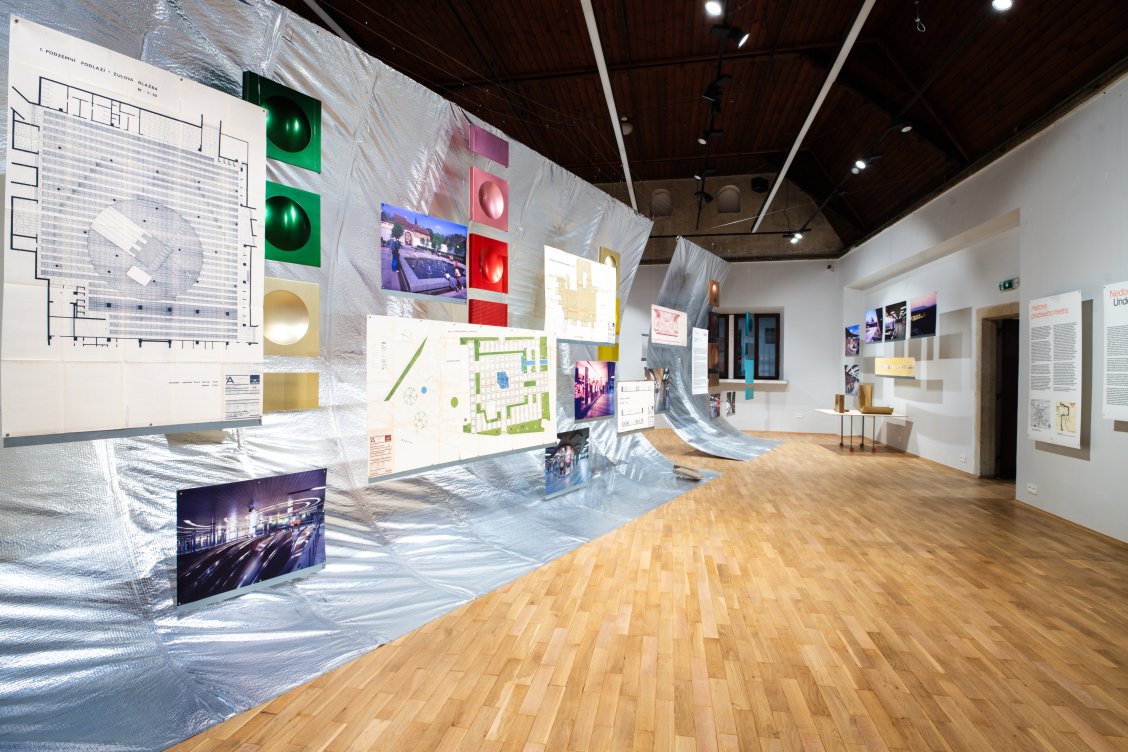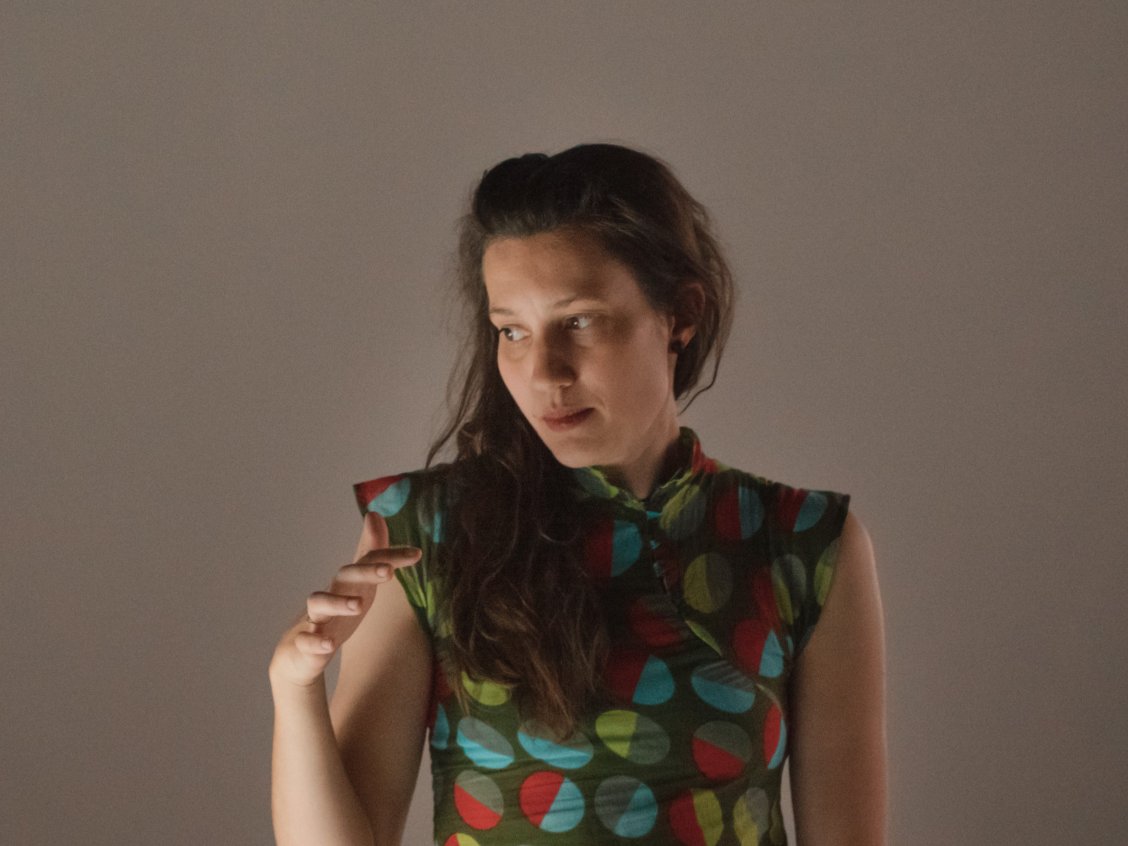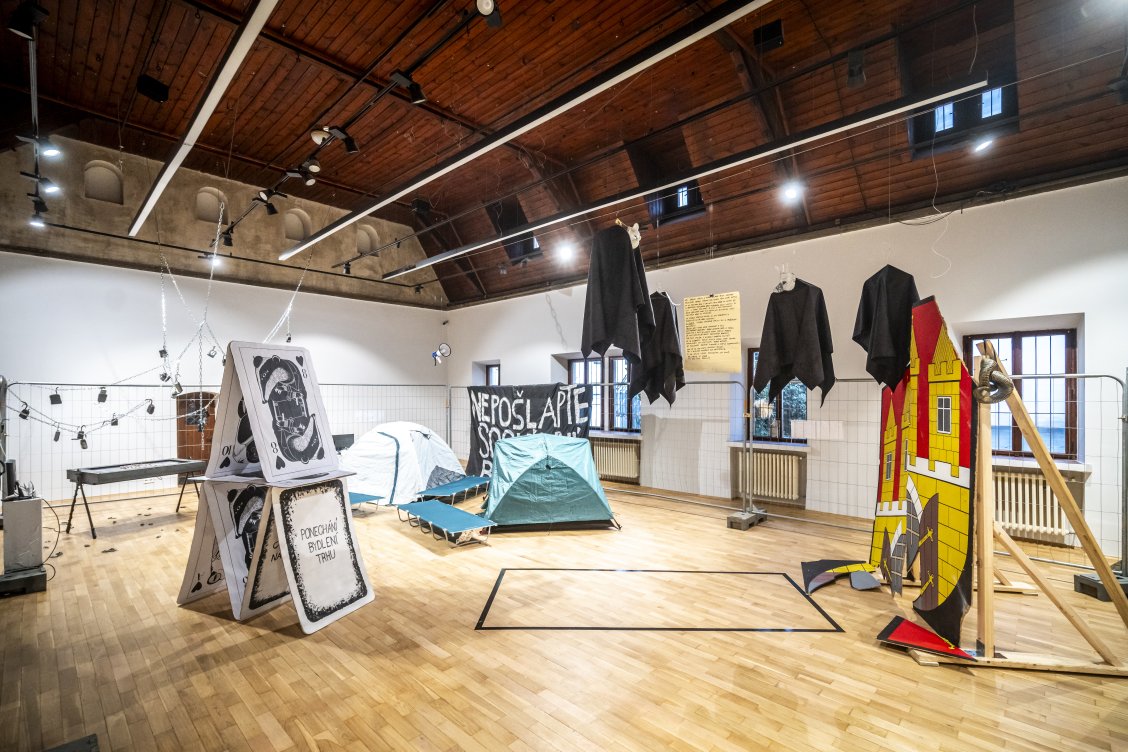Fresh direction. We talk to the director of the Jaroslav Fragner Gallery, Karolina Plášková
24/5/2024

The exhibition hall represents a unique Prague architectural gallery with an exceptionally long tradition. Let us mention that the so-called Fragner Gallery, which stands on Betlémské náměstí, was built soon after the February 1948 fall of democracy and after the reconstruction of the Bethlehem Chapel in 1954, designed by Jaroslav Fragner1/. In the 1970s it functioned as a gallery of art, design and sometimes architecture, which eventually took over. Until 1989 it was affiliated to the Union of Czech Architects. After November 89, it was first managed by the Prague Architects' Association - then under the leadership of Alena Šrámková - and until 2001 it was managed by Soňa Ryndová. In the following period, when it was owned by the Czech Architecture Foundation, its director was Dan Merta, who ran it continuously for over twenty years, most recently within the non-profit organization Architectura, z. s. It should be noted that Fragnerka gained its prestige mainly thanks to professional - architectural exhibitions. It has become a place with a capital M, with traces of legends of Czech architecture: starting with Sial, lectures by historians Švácha or Šlapeta, including personalities such as the mayor of Litomyšl Miroslav Brýdl, etc. And during socialism it was for example the rebel exhibitions of Urbanite Benjamin Fragner, etc. In 2020, the Foundation sold Fragnerka to the Czech Technical University in Prague.
Karolína Plášková has participated in the organisation of a number of cultural events related to architecture and urbanism, such as the 2014 and 2015 Architecture Day in Pilsen, the week-long international festival urbanize! 2016 in Vienna, and the Plan for Brno 2017 conference. She leads the project Drazí architekti... exhibited in 2017, 2018 and 2022/2023 at the Gallery of Architecture Brno (GAB) and the Jaroslav Fragner Gallery in Prague. For GAB, or the Faculty of Architecture of Brno University of Technology (FA BUT), she has curated an international lecture series on architectural education and non-growth in architecture. In 2021 and 2022 she prepared exhibitions under FA VUT: Andi Schmied: Private Views; Gabu Heindl: Urban Conflicts - A Housing Manifesto; Tracing Spaces: Stop and Go; Drazí architekti… — Architektura jako práce.
What will the new exhibition profile of the gallery look like under your leadership? Who should be its typical visitor? Let's remember that the gallery is now part of the concept of the Bethlehem Beseda, which, as we read elsewhere, should function as a living cultural and community space for the gathering of students, academics, artists and other creatives. (It is a combination of the original spaces: the Bethlehem Chapel, St.Wenceslas Hall, Lapidarium, Jan Hus Museum and also the Jaroslav Fragner Gallery.)
Jaroslav Fragner Gallery remains an architecture gallery. I would like to focus on research projects that deal with architecture from a critical perspective, in an interdisciplinary context. I believe that the mere presentation of buildings through panels with photographs, plans and texts, possibly accompanied by models, is a relic. On the one hand, these methods are suitable for other media - whether printed periodicals or online platforms and social networks, which already fulfil this role and are fundamentally faster and more flexible in doing so. In summary, architectural formats often lead to a flattening of the subject matter - it is practically advertising, and that, I think, is not the role of a publicly funded exhibition space.
The GJF is also not a collectorial institution and therefore does not have its own exhibition fund to manage and exhibit. Today, cultural institutions, including exhibition institutions, are expected to interact with their target groups, to build community. Even our exhibitions should not overwhelm visitors with panels and texts; rather, we want to use them as a spatial backdrop for a lively accompanying programme... Rather than frontal lectures, we want to focus on less formal presentations and discussions - and thus encourage the public to get involved. Of course, we choose the formats of the events as appropriate to the topic as possible - this can include roundtables, documentary screenings or theatre performances. We will strive to make the gallery accessible to as wide a range of people as possible. This means, for example, that the programme is free, we will make recordings of some events and offer babysitting for concerned parents during these events. We have inherited a completely empty space, without any equipment, but we are gradually working on making Fragnerka not only a place to go to see exhibitions, but also to read, meet people or buy books... There is a student club with a café on the ground floor.

If you could be specific? Can you give an example?
Within my concept, I would like to present architecture reflecting current topics such as the climate crisis and corresponding strategies, for example, non-growth, sustainability of construction, reconstruction of buildings, urban resilience, circularity, recycling of materials, management of non-renewable resources, humanitarian responses to natural disasters and forced migration, social (in)justice and related concepts of the right to the city, gentrification, ghettoization, etc. The gallery, or architecture, should address not only architects, but also a wider interested public through overlapping. In addition, other cultural events such as concerts and film screenings will be held in the chapel area as part of the Bethlehem Discussion, and these activities will help attract additional visitors from other target groups... I see the gallery not just as a space for the architectural community, but as a cultural and social place. Today the site is perceived as a tourist ghetto and relatively few locals come here - something we want to change.
Do you have any local inspiration for this direction?
I think it's good to take inspiration from similar places in the centre of Prague - for example the Centre for Architecture and Urban Planning. However, CAMP is part of a contributory organisation and operates on a different financial principle. In many ways it has much more generous possibilities - it's bigger, it's wheelchair accessible, it has high-tech equipment and the facilities of a park as a public space, which allows it to attract a wide audience. On the other hand, it is primarily used for the presentation of city projects. Also relevant is, of course, the VI PER architecture gallery, run by two art historians. It has a relatively intimate scale and targets a specific audience. In addition to places for the presentation of architecture, it is also interesting to observe other cultural and social spaces such as the Hybernská Campus, the Scout Institute or the Karlín Barracks.
Will you be the curator yourself?
Unfortunately, we don't have the capacity for this within our internal team, most of the exhibitions will be created in collaboration with external curators. Some of the exhibitions may be on loan from abroad or selected by the gallery board on the basis of an international open call. At the same time, the operation of the gallery should remain flexible enough to host events that respond to the most topical issues or causes.

Will you have any gallery advice available?
The gallery council should function as an advisory body - members should give us feedback on the upcoming programme, recommend other curators or guests for the accompanying programme, and above all help with networking abroad. The gallery is now established by the CTU, and both faculties teaching architecture have nominated their representatives to the board: for the Faculty of Architecture are Jana Tichá and Lucia Mlynčeková, for the Faculty of Civil Engineering Mikuláš Hulec and Josef Záruba Pfeffermann. In addition, we have identified several foreign curators and Czech researchers with links abroad, whom we would like to have as part of the board. However, due to other procedural matters, we have not yet had the capacity to formally establish a gallery council; our programme has so far been consulted "ad hoc" with experts and specialists on the subject.
What about our Faculty of Architecture? Will it have any wider influence within the CTU?
The faculty has nominated two members to the gallery council, and we are in contact with other members of the academic community. For example, we consulted with Petr Vorlík on the accompanying programme of the exhibition on post-war architecture, and together with three other colleagues we also gave presentations on the protection of post-war architecture. The Department of Public Relations helps to promote our events on the Faculty's channels. The CTU put out an open call for the redesign of the chapel courtyard, and one of the members of the working group on the solution is landscape architect Zuzana Štemberová, head of the Department of Landscape Architecture.
